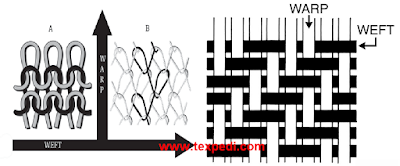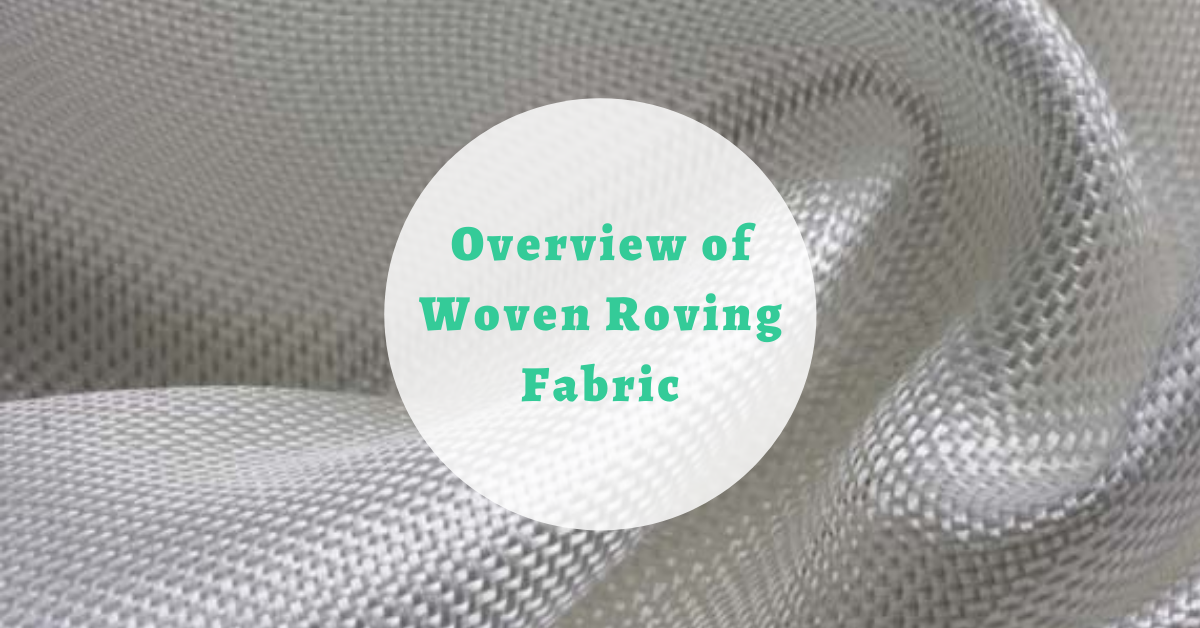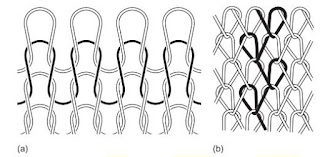Md. Emdad Sarker
Assistant Professor
Department of Fabric Engineering, BUTEX
Unlike two-dimensional woven, knitted, and crocheted fabrics, spacer fabrics consist of the top and bottom layers of fabric, connected with filament yarns similar to a corrugated box (three-dimensional structure). It is believed that this single layer regime would create substantial savings both in treatment time and financially, as it is intended to replace the current multilayer bandage systems. Currently, the most economical system available is a two-layer system incorporating a padding and compression bandage.
Assistant Professor
Department of Fabric Engineering, BUTEX
Unlike two-dimensional woven, knitted, and crocheted fabrics, spacer fabrics consist of the top and bottom layers of fabric, connected with filament yarns similar to a corrugated box (three-dimensional structure). It is believed that this single layer regime would create substantial savings both in treatment time and financially, as it is intended to replace the current multilayer bandage systems. Currently, the most economical system available is a two-layer system incorporating a padding and compression bandage.
The knitted three-dimensional spacer fabrics themselves can be made by using either warp knitting or weft knitting technologies. The basic structure of the weft-knitted spacer fabric is limited to either knitting the spacer threads on the dial and tucking on the cylinder or tucking the spacer threads on the dial and cylinder needles [1].
| Spacer fabrics with a closed and open structure |
These are made of two independent fabrics connected through yarns or knitted layers. The warp knitted fabrics with such a structure are known as spacer fabrics the connection being made only with yarns. The warp knitting technology is suited for the production of spacer fabrics with open and/or closed structure for the external fabrics. If special monofilament yarns are used the connection, the spacer fabrics present an excellent bending recovery that recommends them for end-uses such as backpacks, shoes, mattresses, etc.
In the case of weft knitting, the sandwich fabrics are connected using yarns or knitted layer. The connection through yarns offers limited possibilities of structural diversification, while the fabric thickness is limited. The sandwich fabrics with a connection through knitted layers (single or double) are characterised by a complex geometry, for which the shape and dimensions of the cross-section depend on the connecting layer.
The 3D geometry is generated by the different amount of rows knitted along the panel width, the surplus stitches being placed spatially. These fabrics are produced on electronic flat knitting machines for which the carrier course is variable.
| Sandwich fabrics with a connection through yarn and knitted layer |
The spatial fashioning of the knitted fabrics (also known as ‘flechage’) is based on knitting courses on all working needles and courses on a variable number of needles, determining zones with different amount of stitches [2]. The zones with the highest amount of stitches will have in the end a spatial geometry.
A classification of the spatial fashioned fabrics must take into consideration the 3D shape of the product. There are fabrics with different shapes, such as hemispherical and spherical fabrics; frustum of a cone and hyperboloid fabrics; tubular-shaped fabrics – straight (T shape) or bent; parallelepiped and pyramid fabrics; discoid fabrics; fabrics with other shapes, derived from the ones mentioned above [3].
Fabric with Piezo Electric energy harvesting facility
The three-dimensional spacer structures for piezoelectric energy harvesting applications are built around the piezoelectric PVDF monofilaments which are weft-knitted in conjunction with metallic Ag-coated-Polyamide-6,6 yarns and polyester yarns to provide a robust three-dimensional structure. The PVDF filaments act as the active element here providing the piezoelectric response whereas the metallic Ag/PA-6,6 yarns provide the medium to collect and extract the charge from the structure. The figure mentioned below illustrates the weft-knitted structure produced by using three different yarns:
- conductive yarn A,
- Insulating yarn B and
- Piezoelectric yarn C.
| Weft knitted structure with three functional yarn for piezoelectric harvesting |
The advantage of the process is that it is considerably less time consuming since the piezoelectric fibres are poled during the fibre production process itself and can be used as such without resorting to further modifications and poling [4].
Advantages of spacer fabric
The major benefit of using spacer material is to replace polyurethane (PU), neoprene, and other types of foams that are laminated to textile fabrics for creating bulk, softness, flexibility, resilience, and so on. These foams, however, have some serious drawbacks. For instance, foams are generally flammable and are extremely uncomfortable because of their extremely small cavities. Their thermophysiological properties are poor, their compression and resilience properties deteriorate with time, and their mouldability, delamination, maintenance of original thickness when moulded into complex 3-D shapes, and washing and drying properties are often poor and do not meet the standard required. Relatively stiff monofilaments generally used as spacer material more or less overcome these drawbacks associated with laminated structures [4].
Applications of spacer fabrics
The major product applications for warp-knitted spacer materials are vehicle seat covers (both solid or net structures in the face or back or both surfaces); automotive interiors (lining for doors, roofs, convertible hoods, and so on); seat heating systems for cars; mud flaps for trucks and buses; insoles and face fabric for sports and other shoes; lining for rubber and other boots; protective inner lining; mattress underlays and mattress covers for prevention and management of incontinence and pressure sores; for children’s beds; diving and surfing suits; sports equipment; high-performance sportswear; reinforcement for composite structures; bras; underwear; swimwear; shoulder pads; fluid filters; geotextiles; bandages; plaster casts; braces; controlled release of drugs, antimicrobials, cosmetics, and so on; and finally heat and moisture regulation fabrics [4]. Among the above applications, some are illustrated in figures:
| Spacer Fabric Applications: Bra-brief and Upper and inner spacer fabric in sport shoes |
| Spacer Fabric Applications: Moisture & heat regulation in spacer material and car seating fabric |
List of References:
[1] A. R. Horrocks and S. C. Anand, Handbook of Technical Textiles Volume-2. 2000.
[2] Song, G., Wu, J., Wei, Y., Computer-Aided-Design of Three Dimensional
Knitwear, JOTI, vol. 97, 6, pp. 549-552
Knitwear, JOTI, vol. 97, 6, pp. 549-552
[3] Power, J., Knitting Shells in the Third Dimension, JTATM, vol. 4, 4/2004,
pp. 1-12
pp. 1-12
[4] A. R. Horrocks and S. C. Anand, Handbook of Technical Textiles Volume-1.
2015.
2015.
You may also like:
Texpedi.com
Check out these related articles:








I am very impressed with the viewing new cloth because I did not work in any fabric mill. Therefore, I like to read this very informative essay for us to know how to prepare the thick cloth Assignment writing services
create substantial savings both in treatment time and financially, Buy A Custom Essay as it is intended to replace the current multilayer bandage systems.
Well I love this article and reading t is a set of elastic band supplier that creates a records management platform that allows monitoring, consolidating and evaluation. this machine is conformed with the aid of elasticsearch, logstash and kibana. this set can be diagnosed as “elk stack” or just “elk”